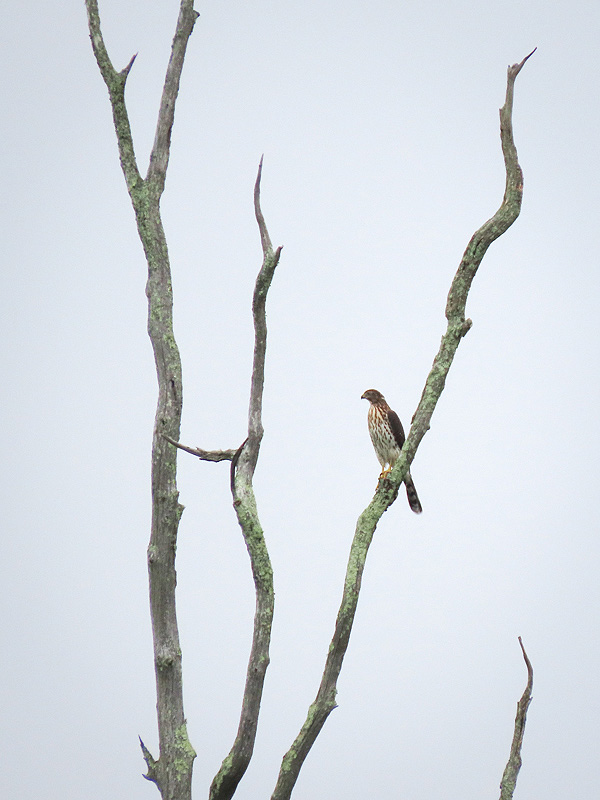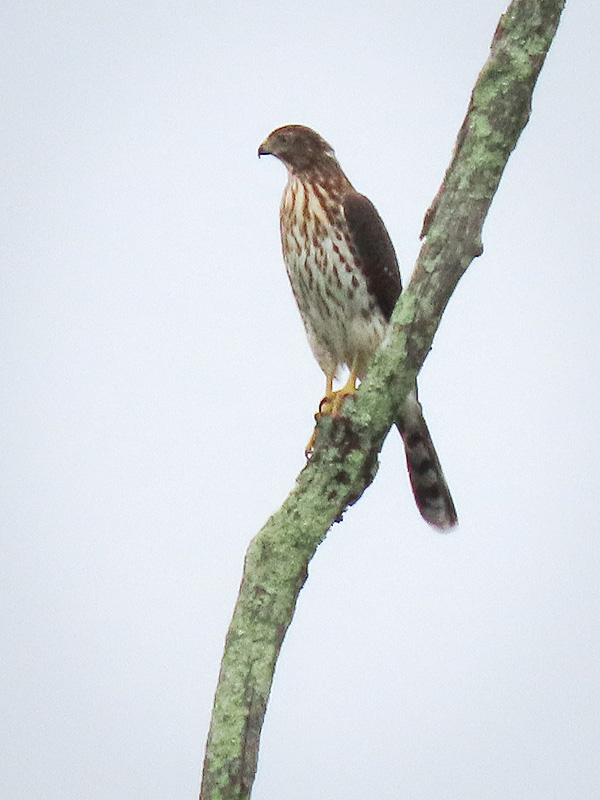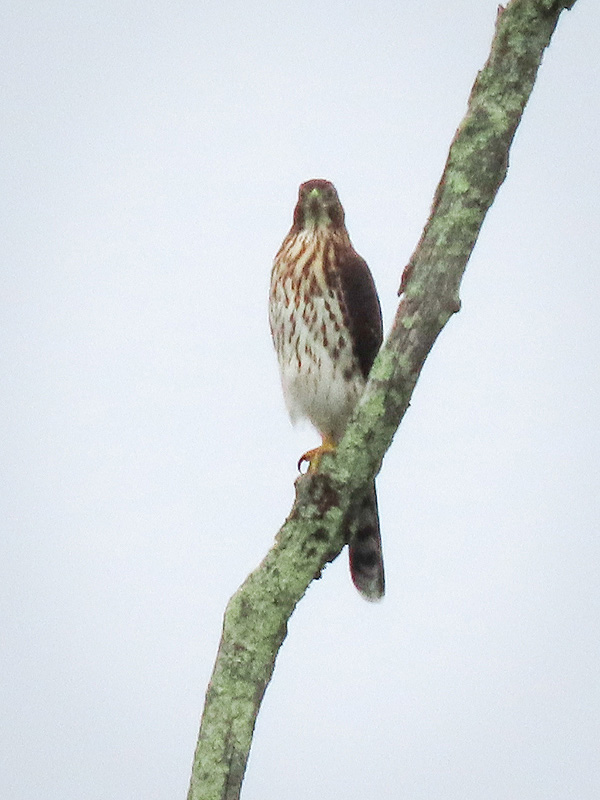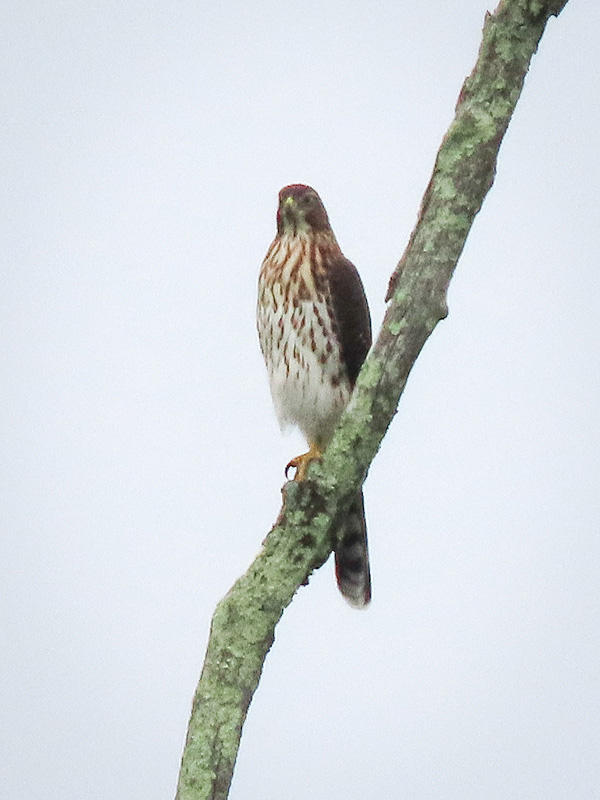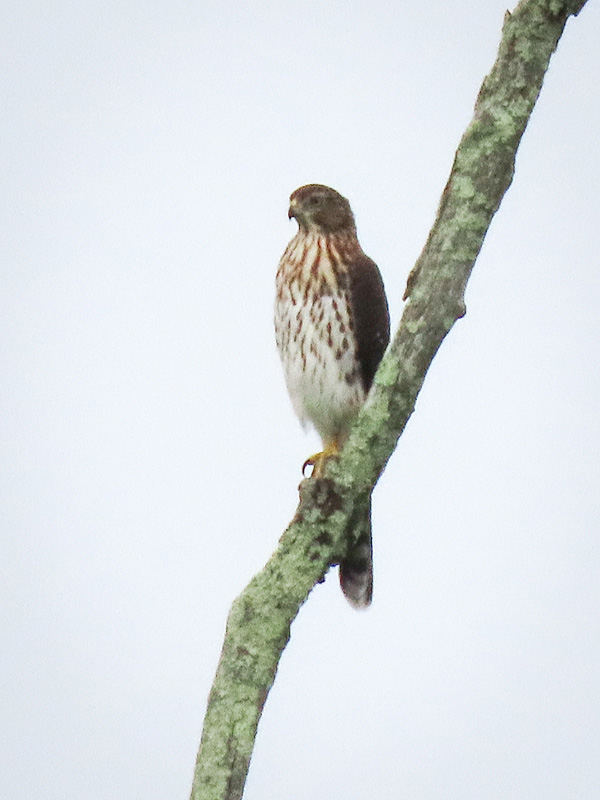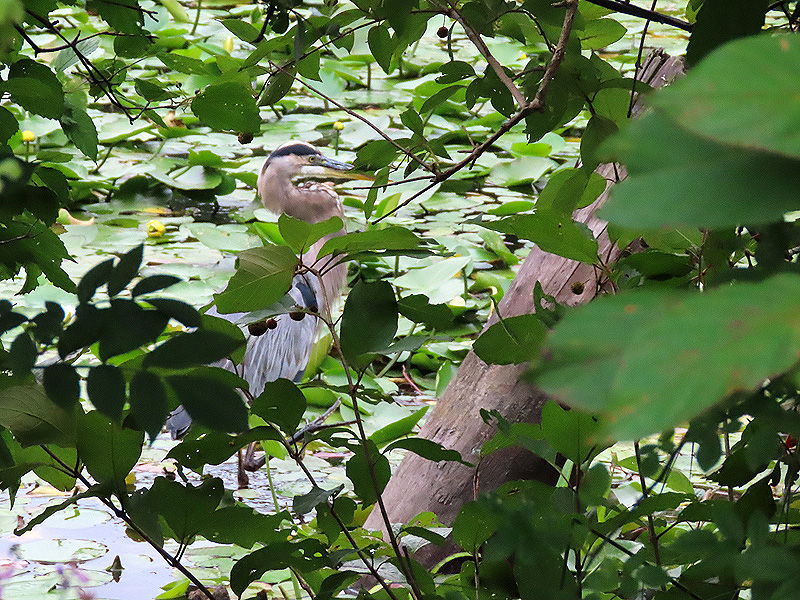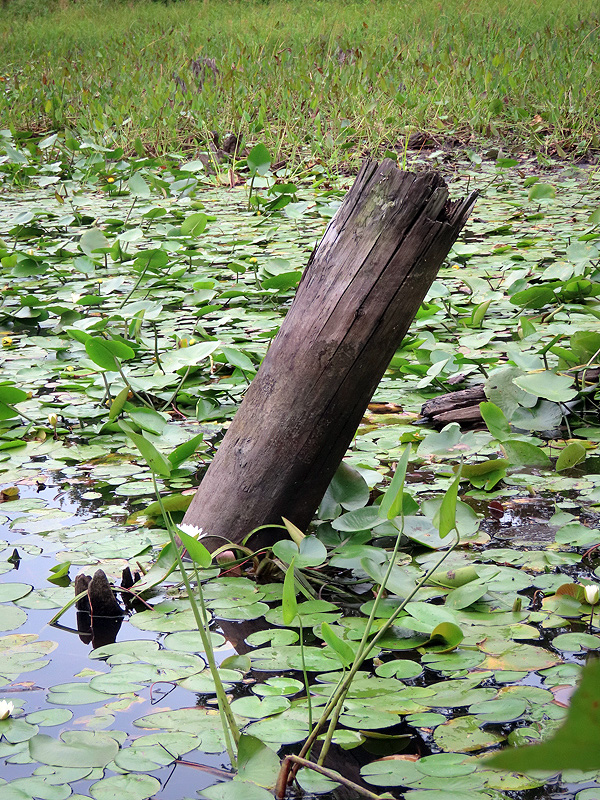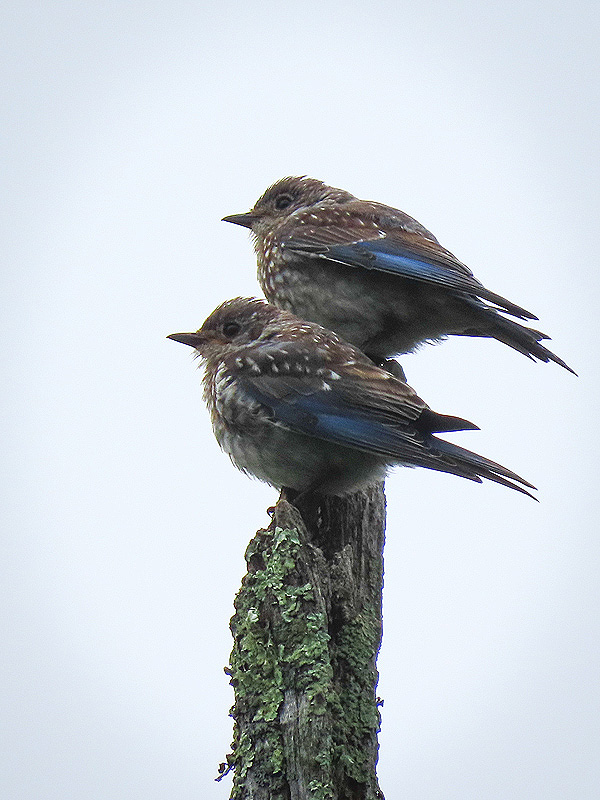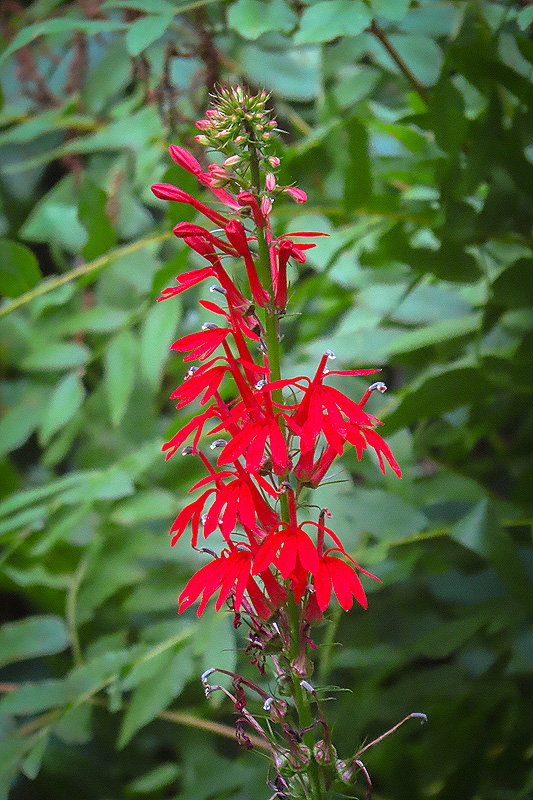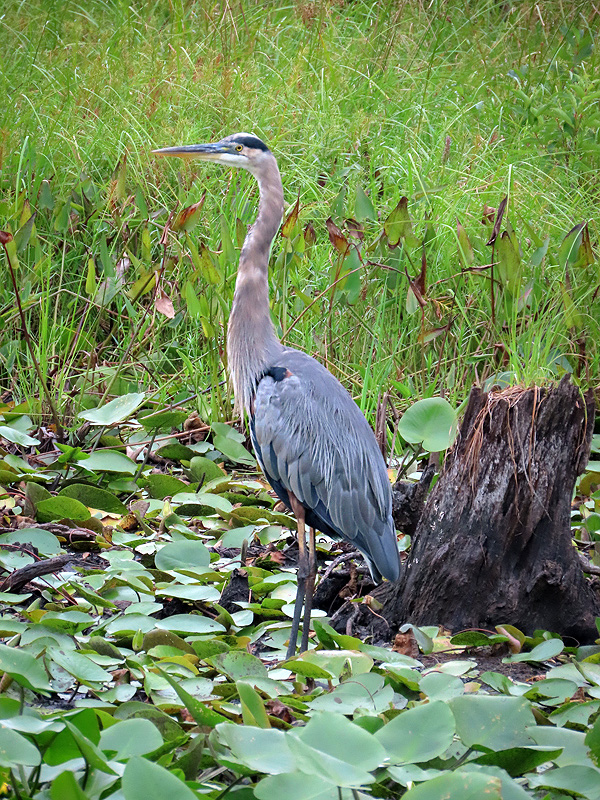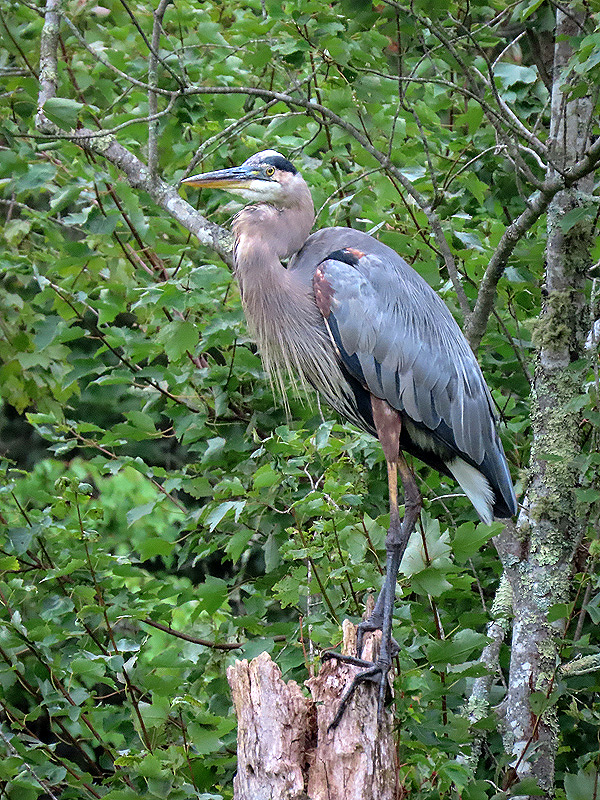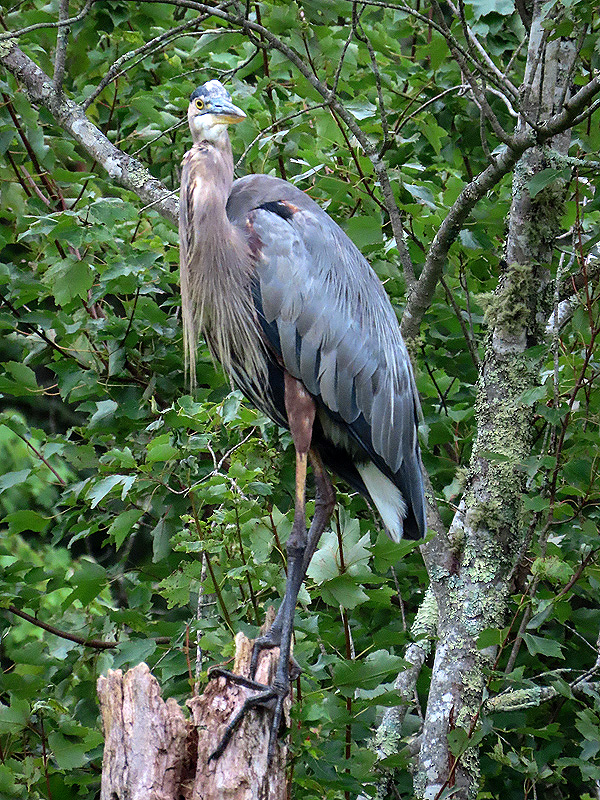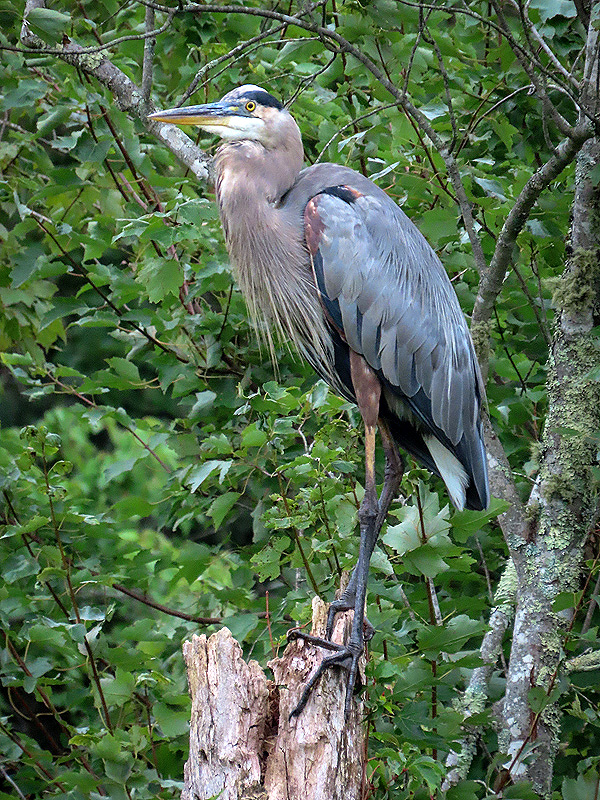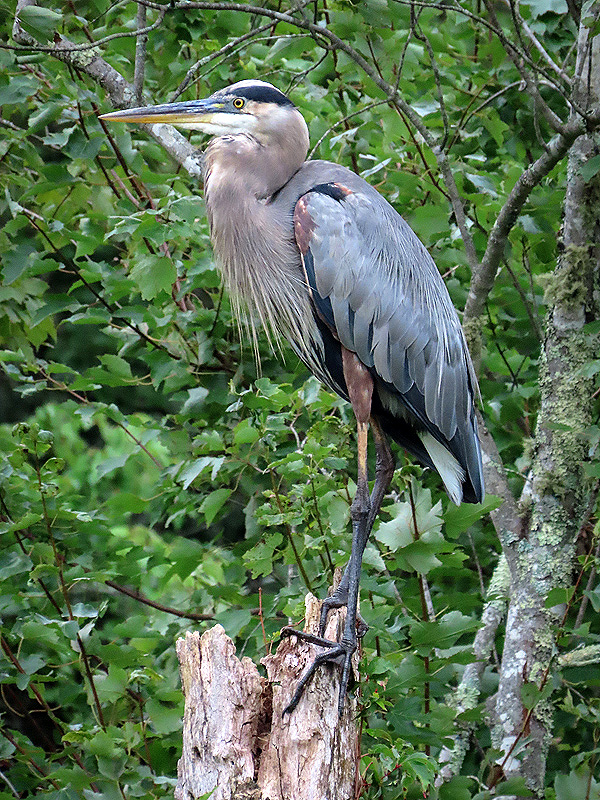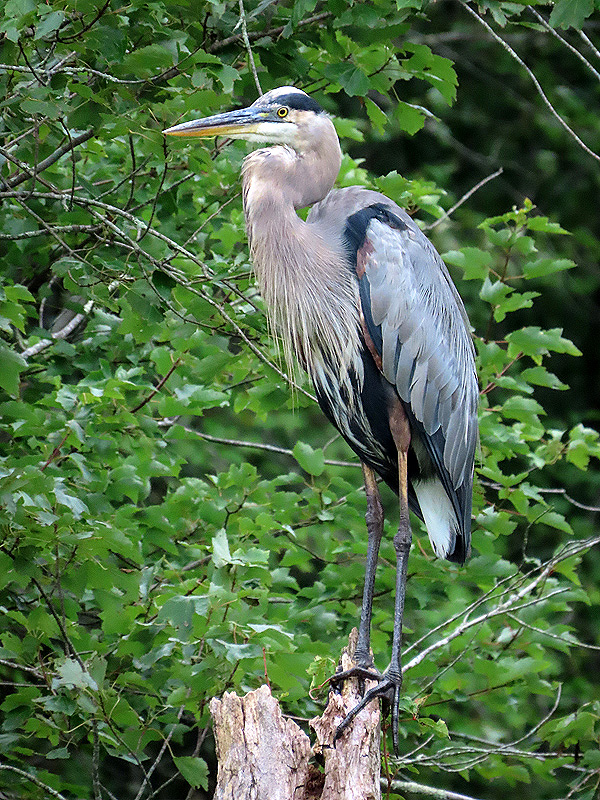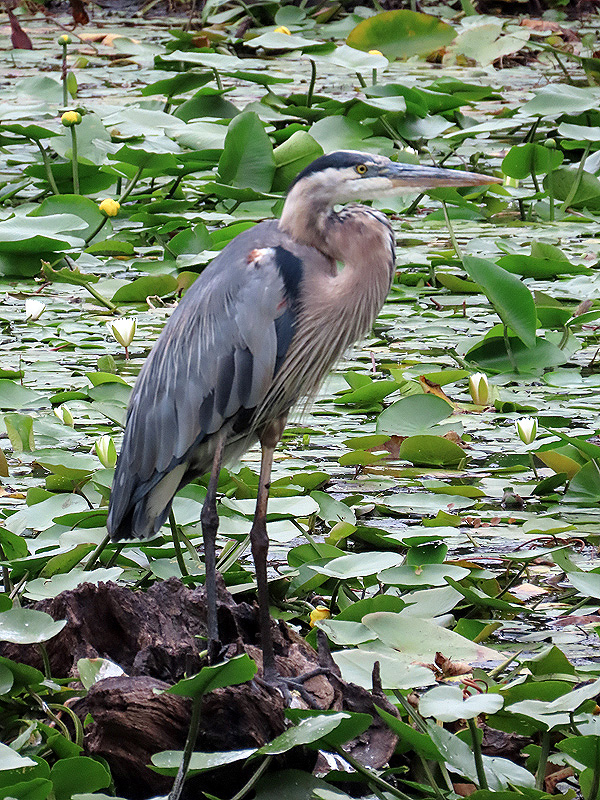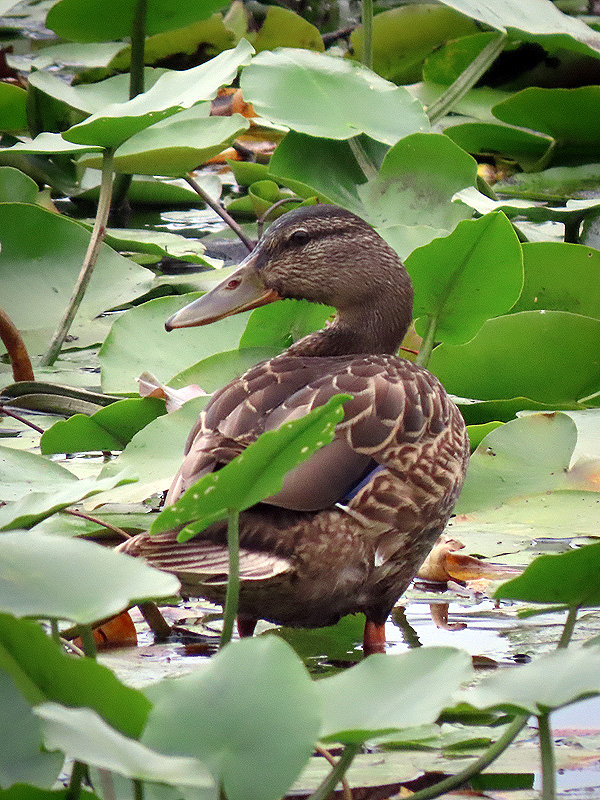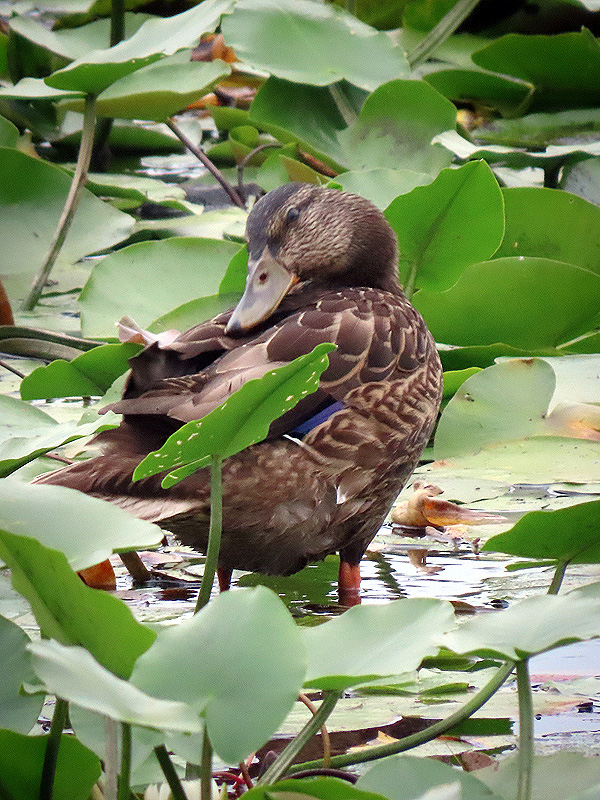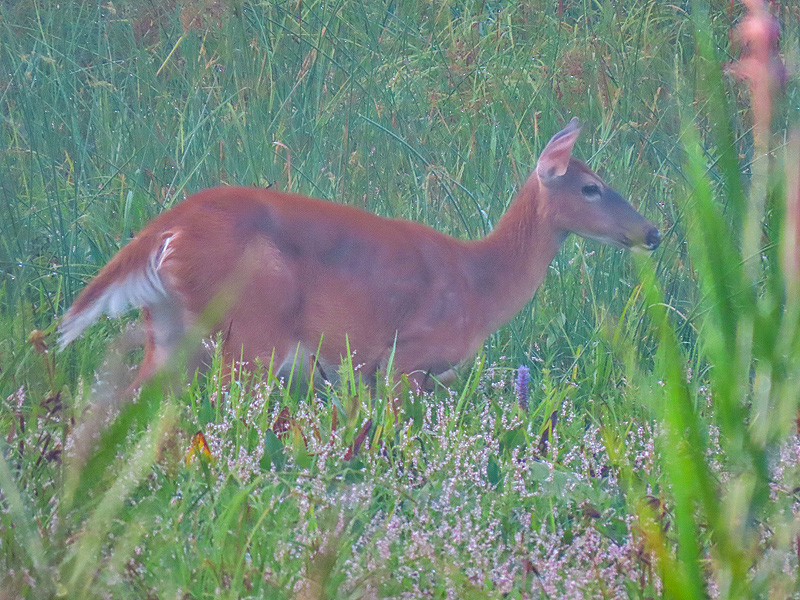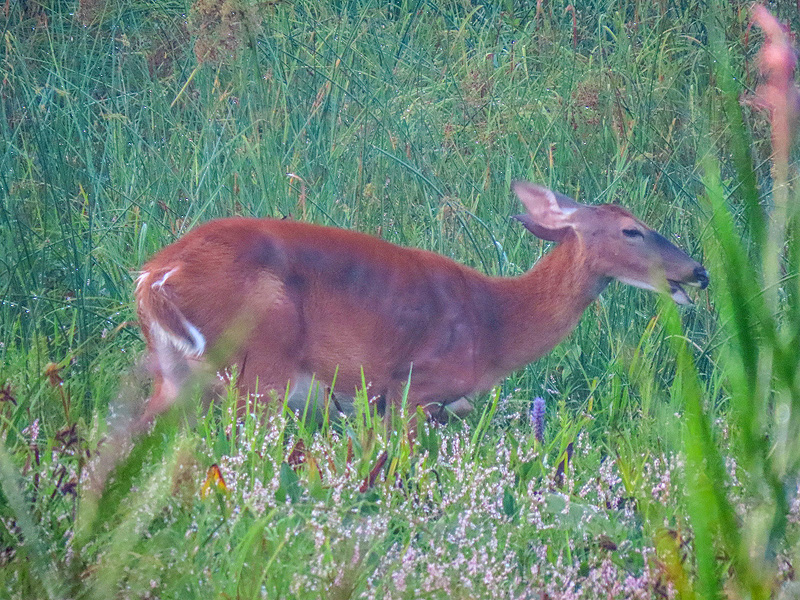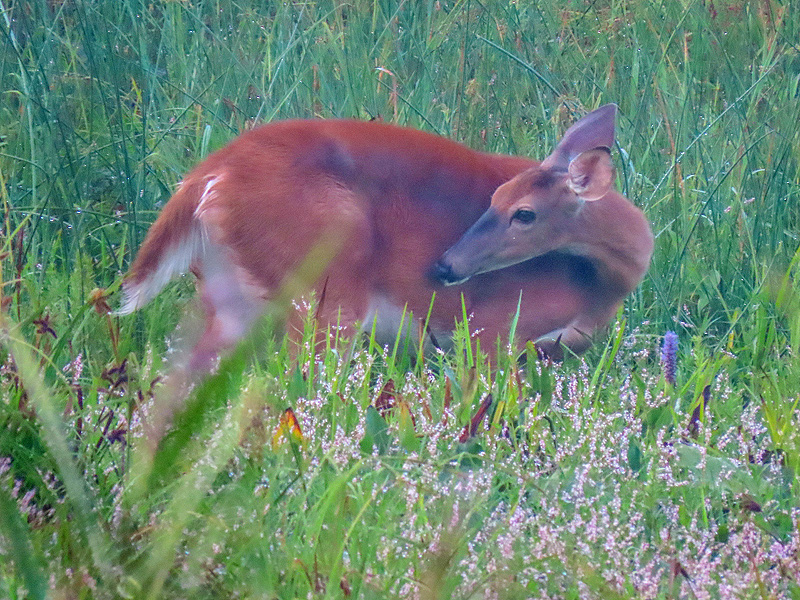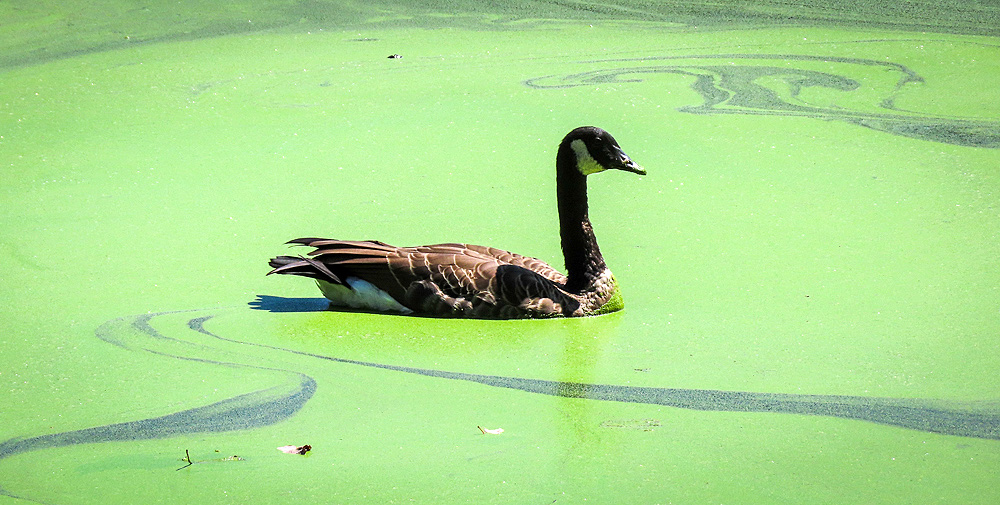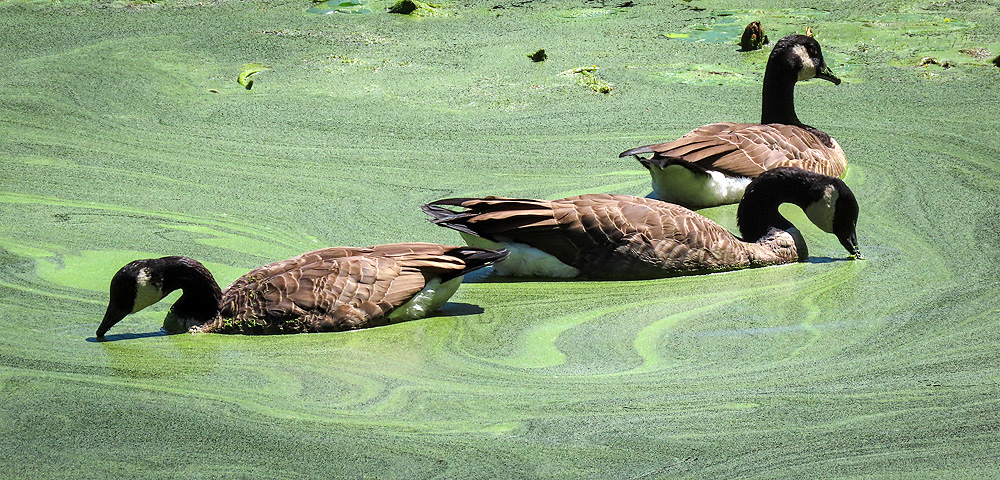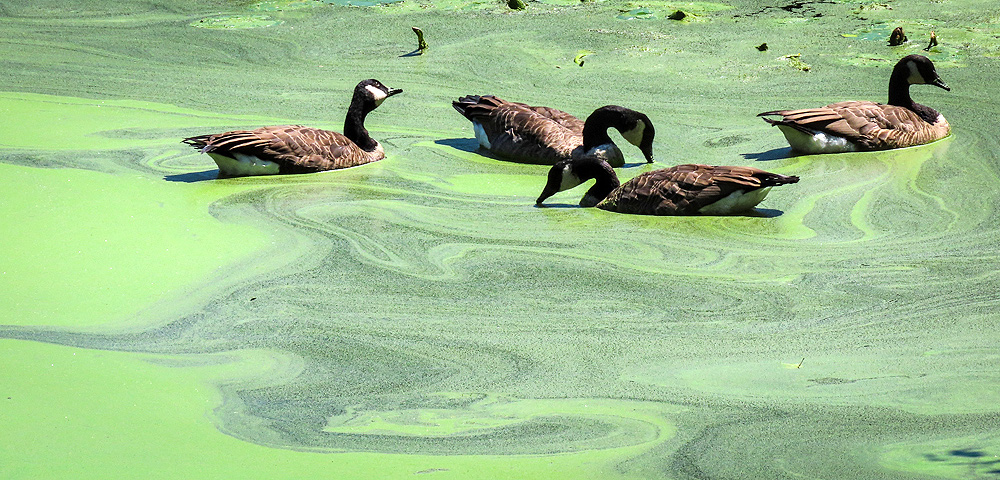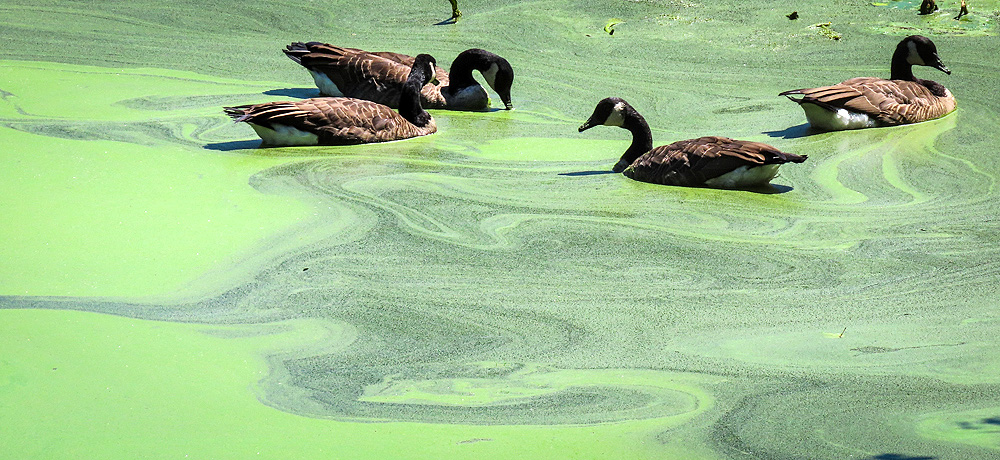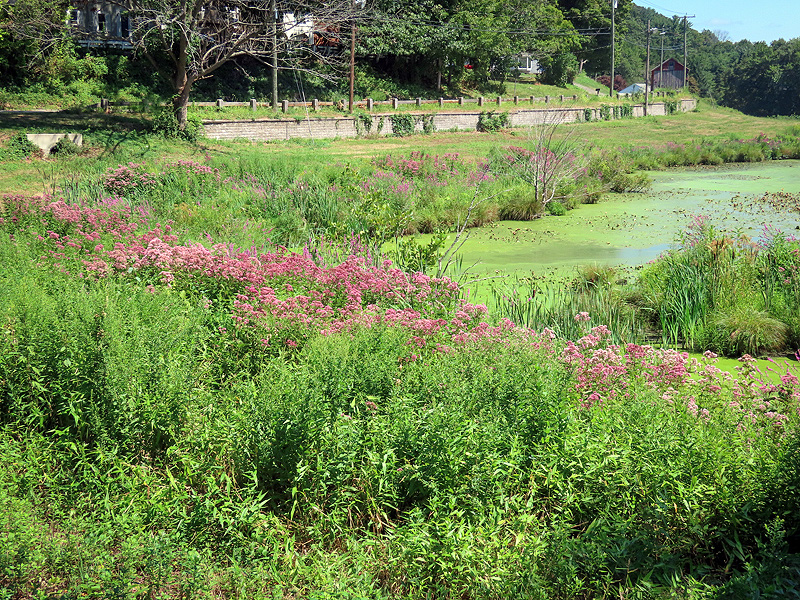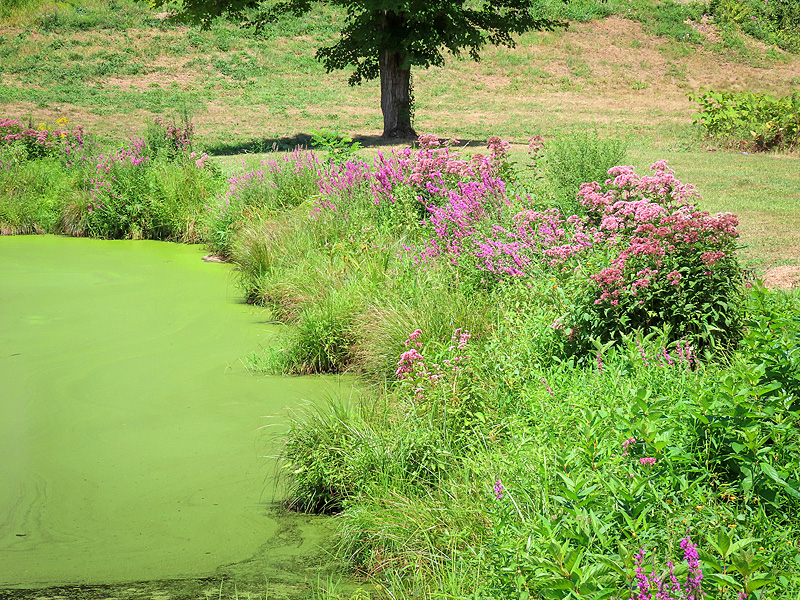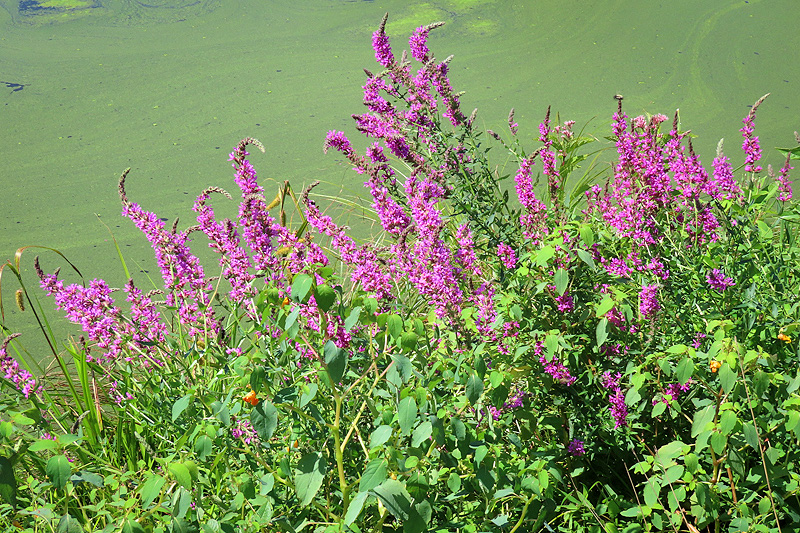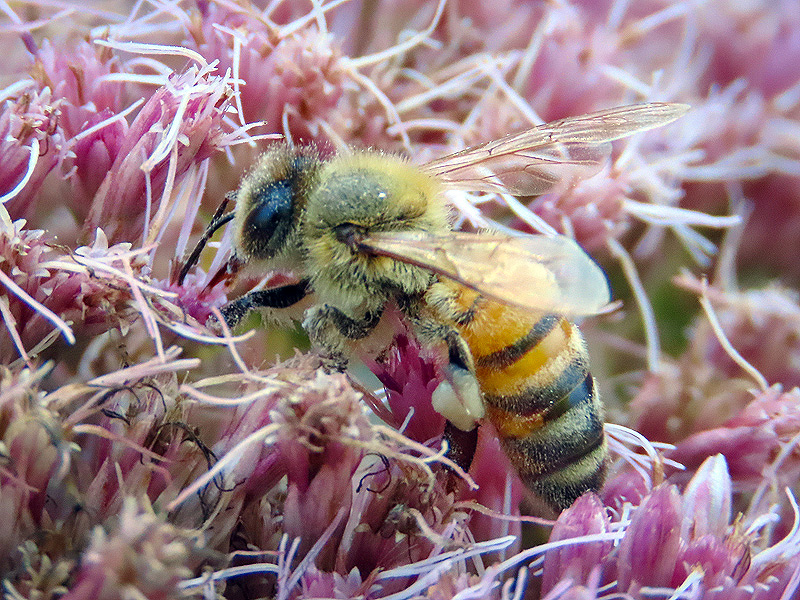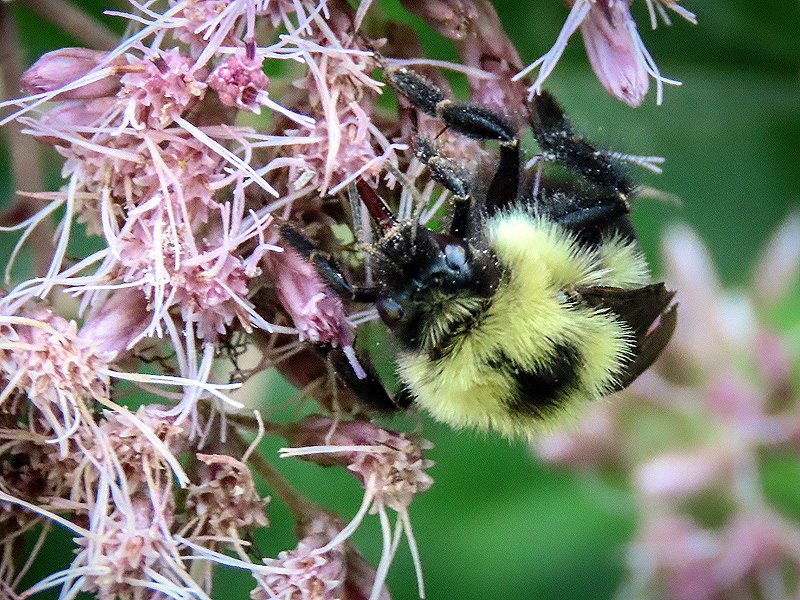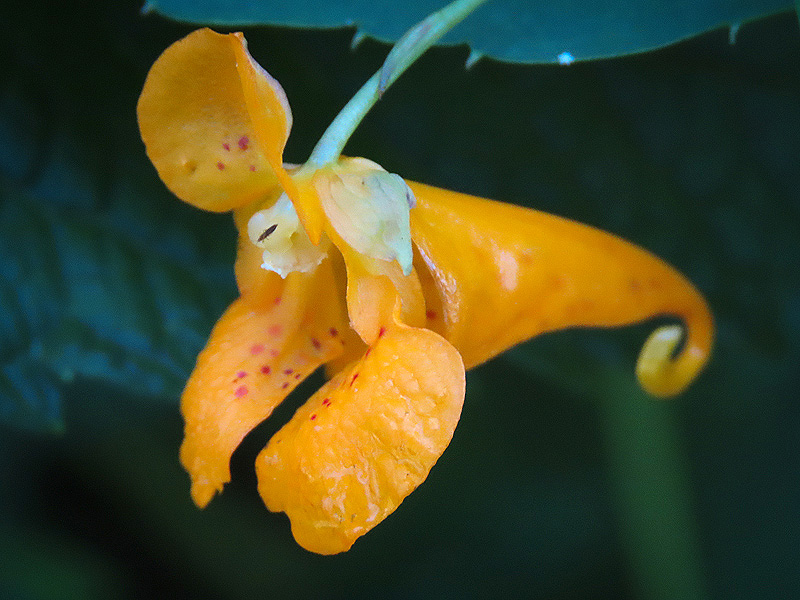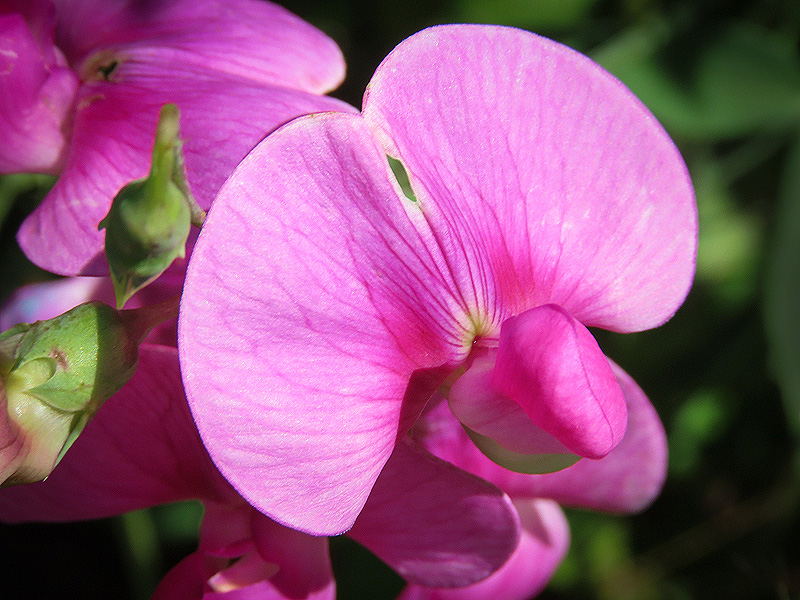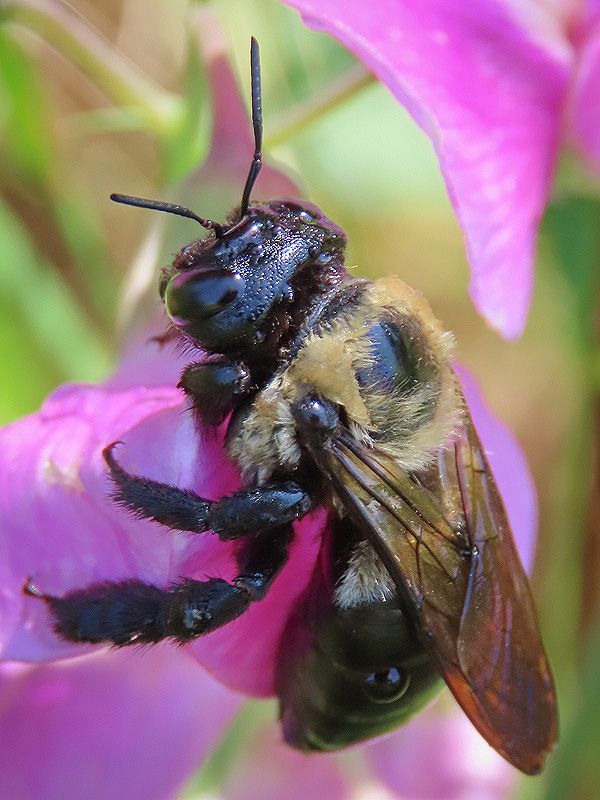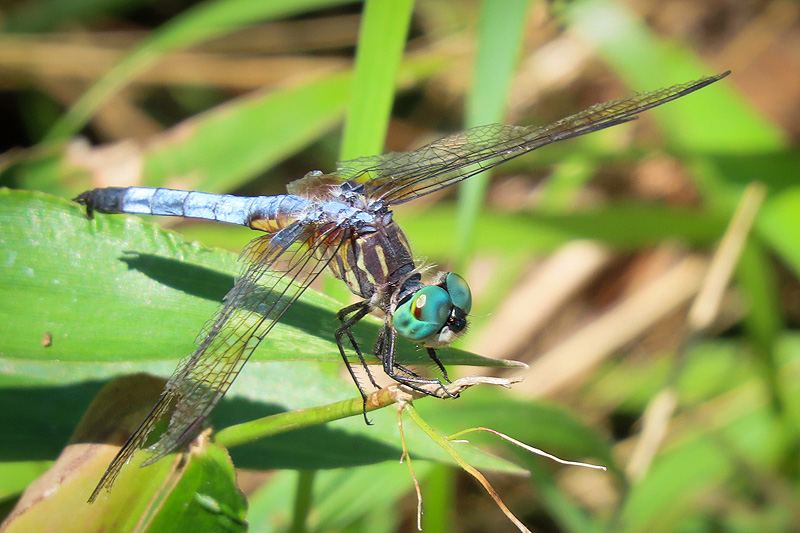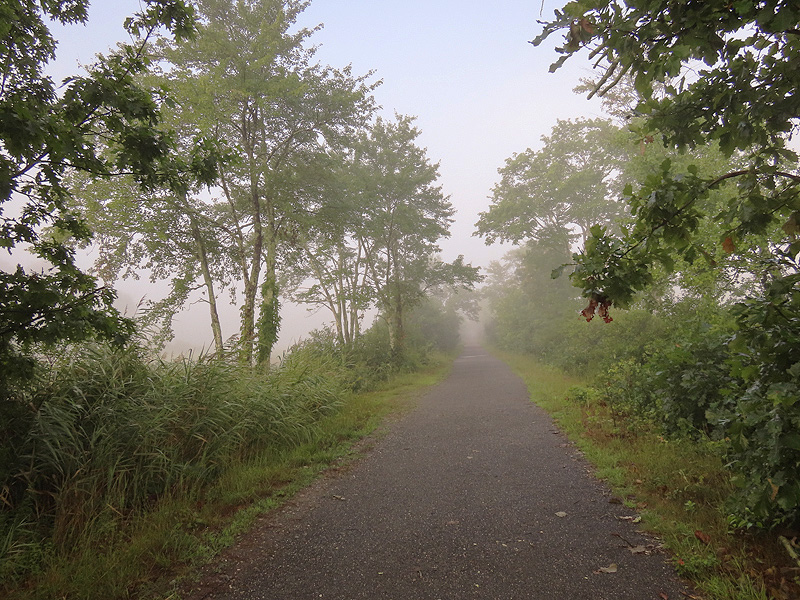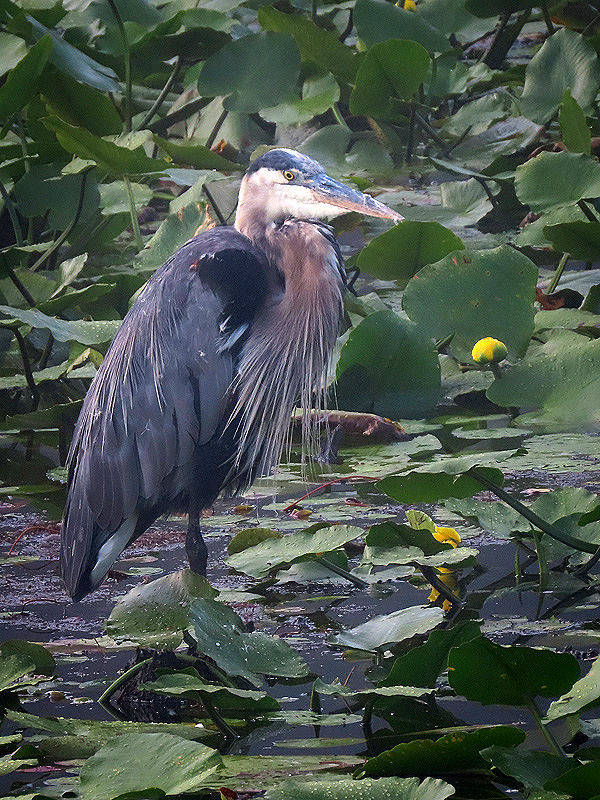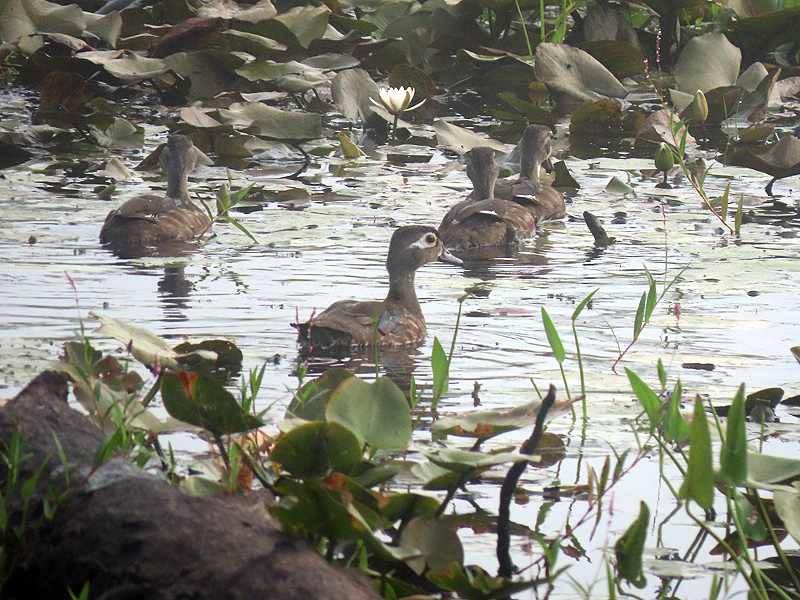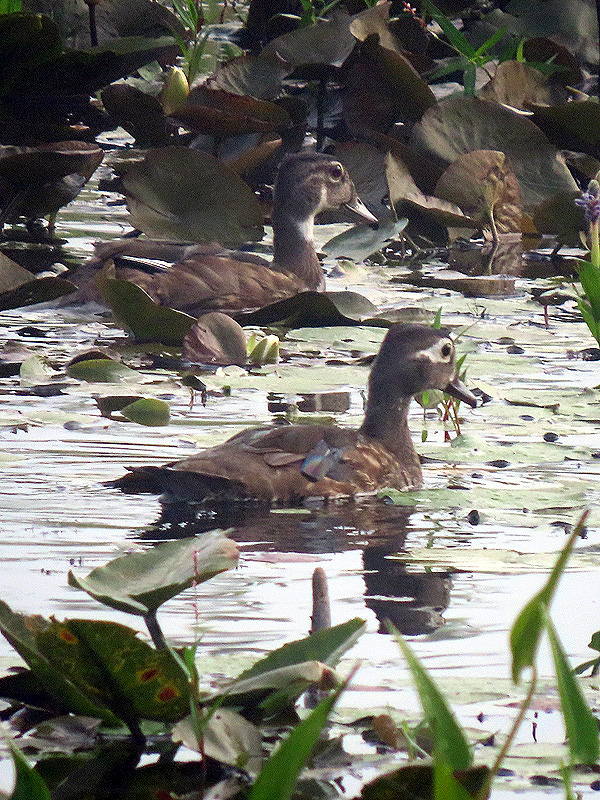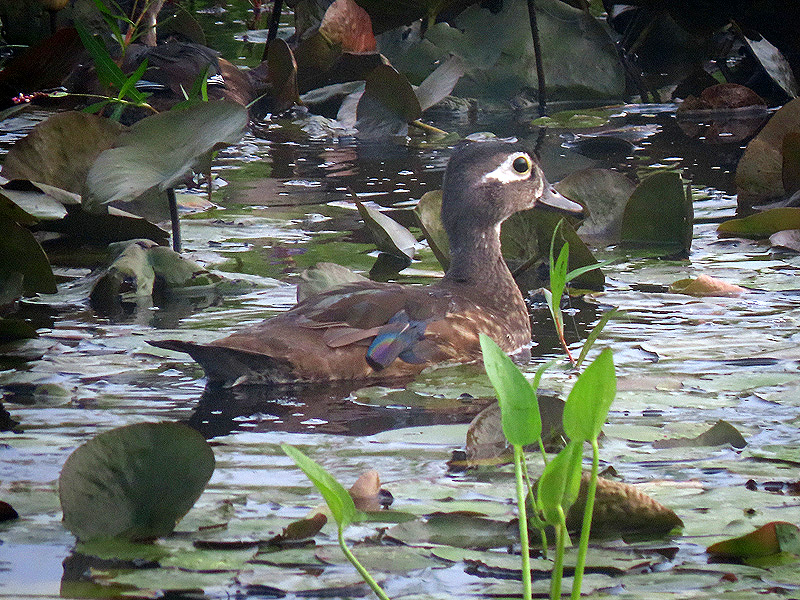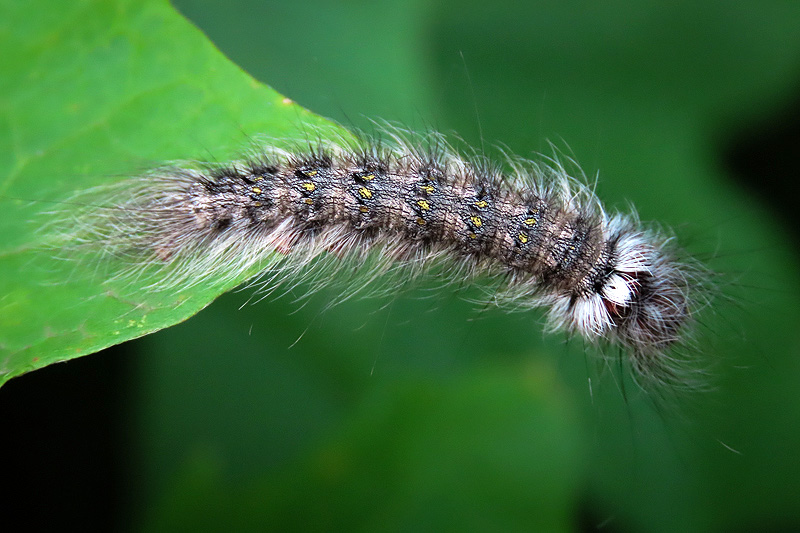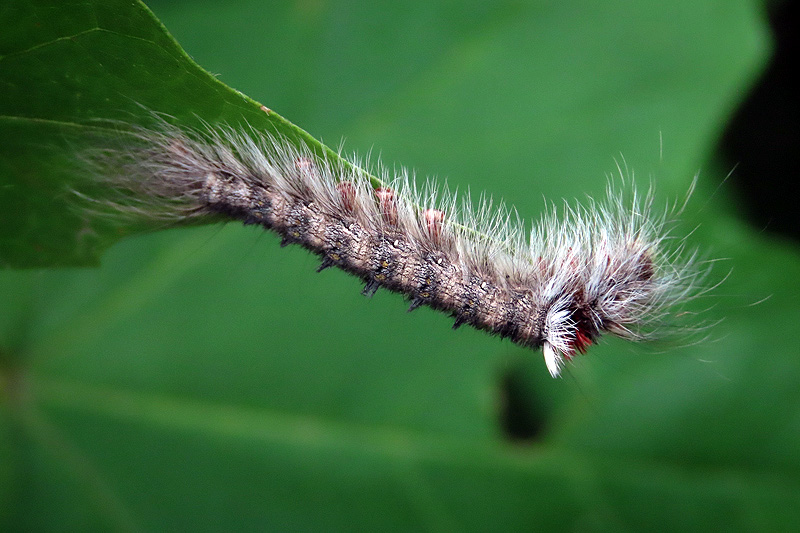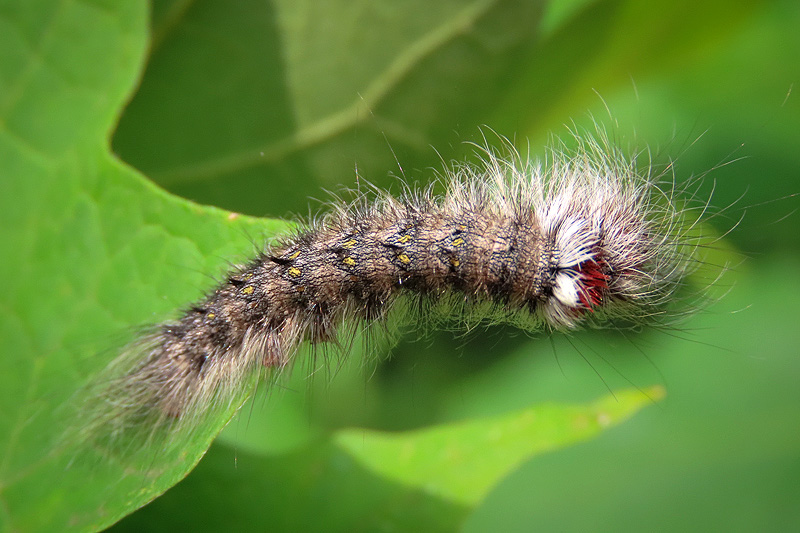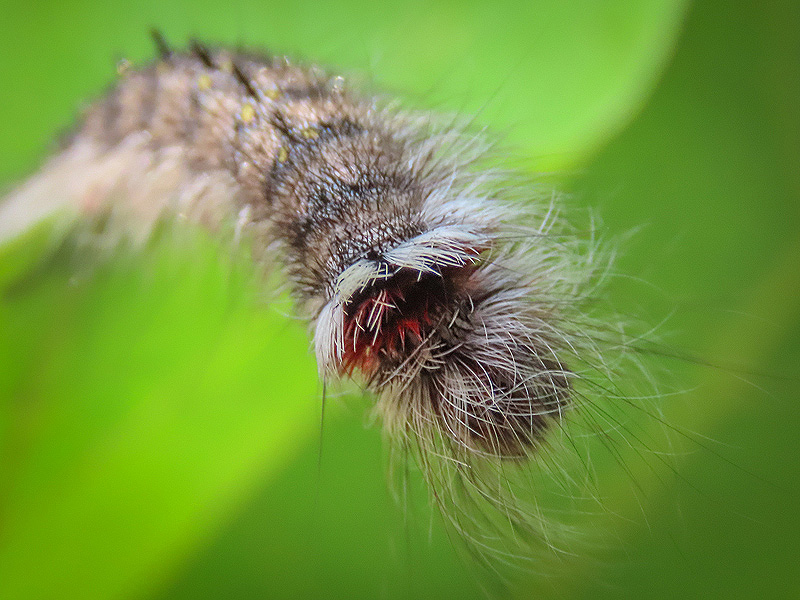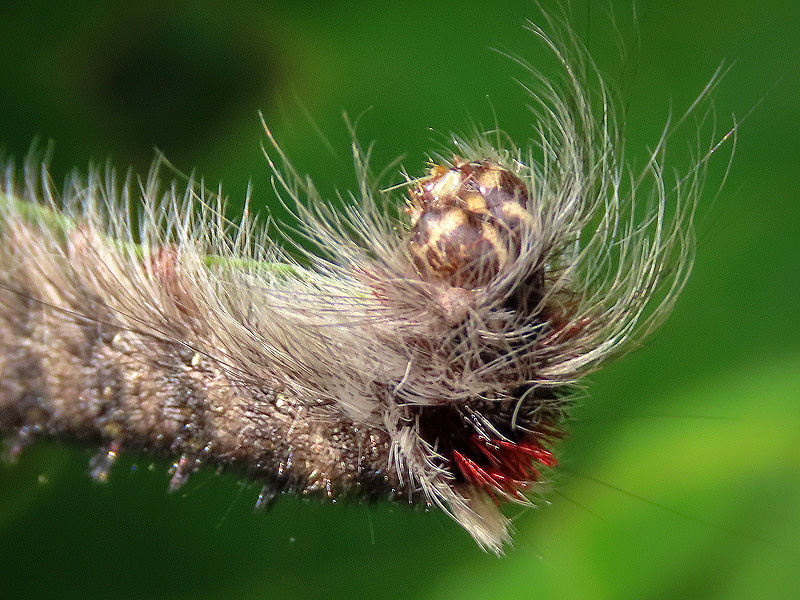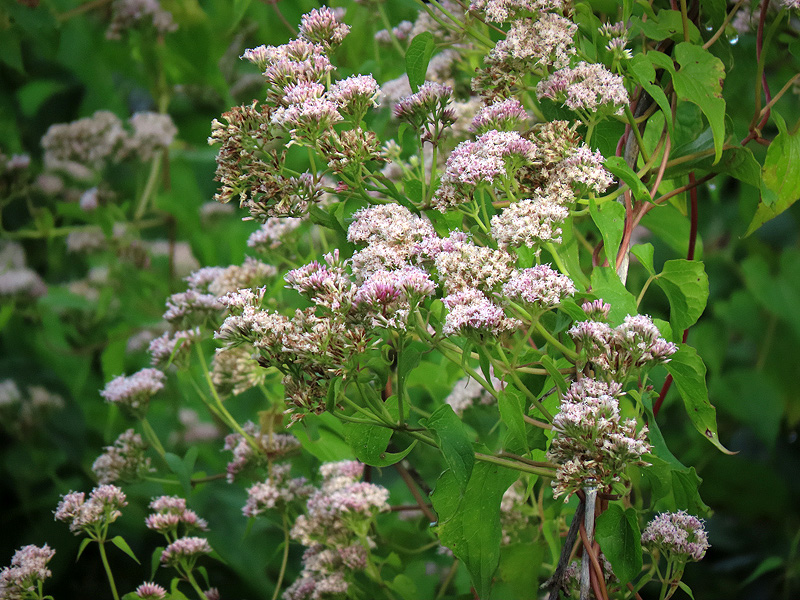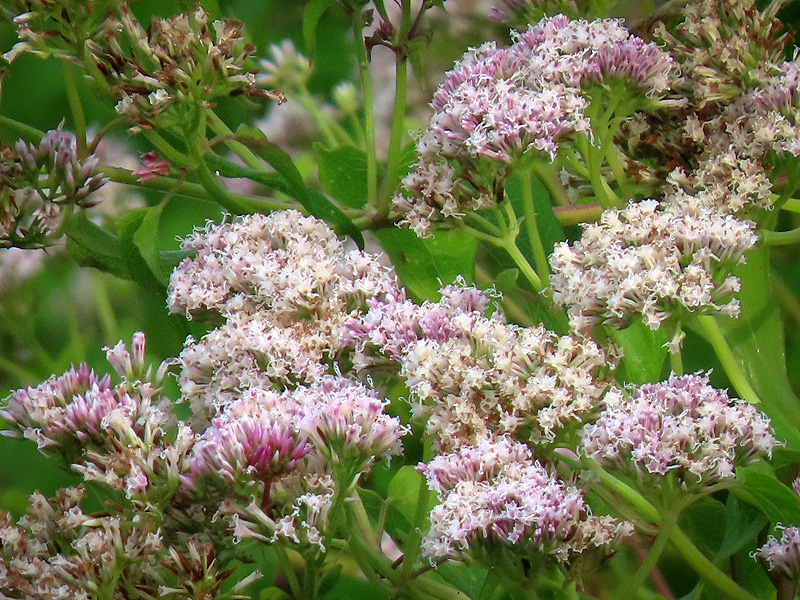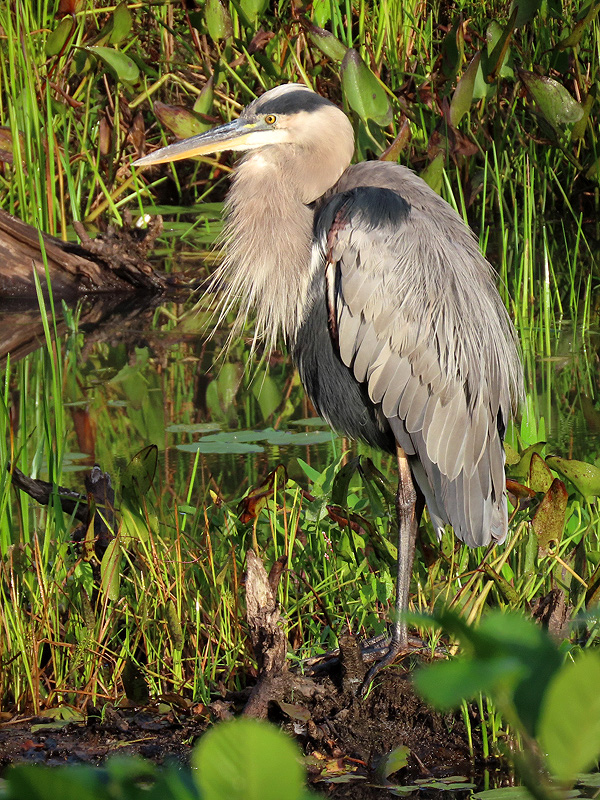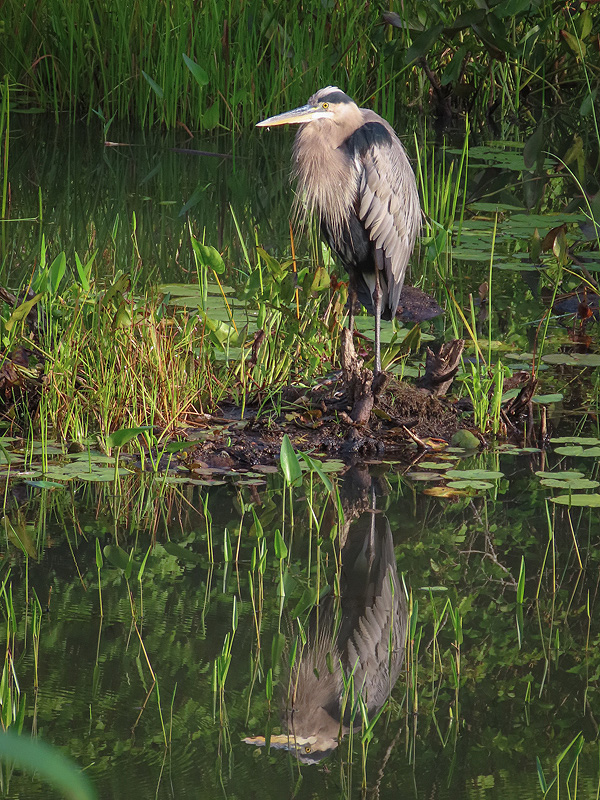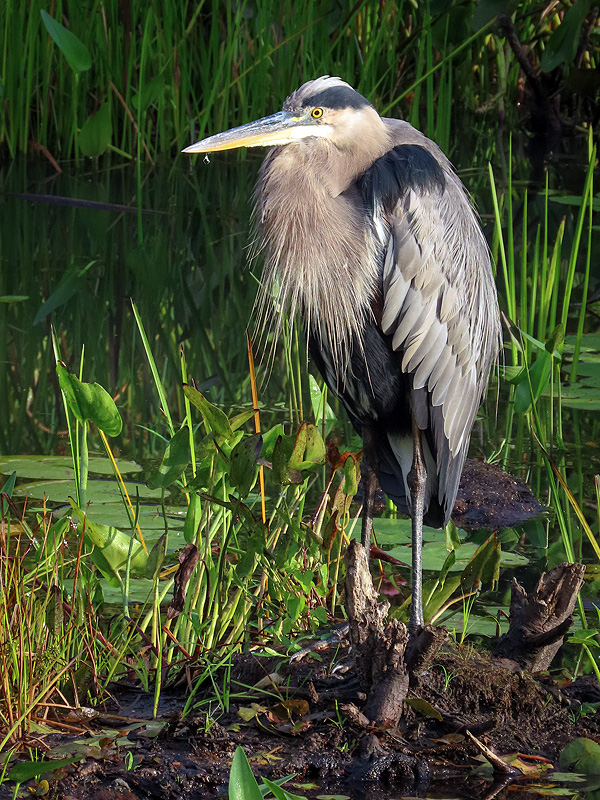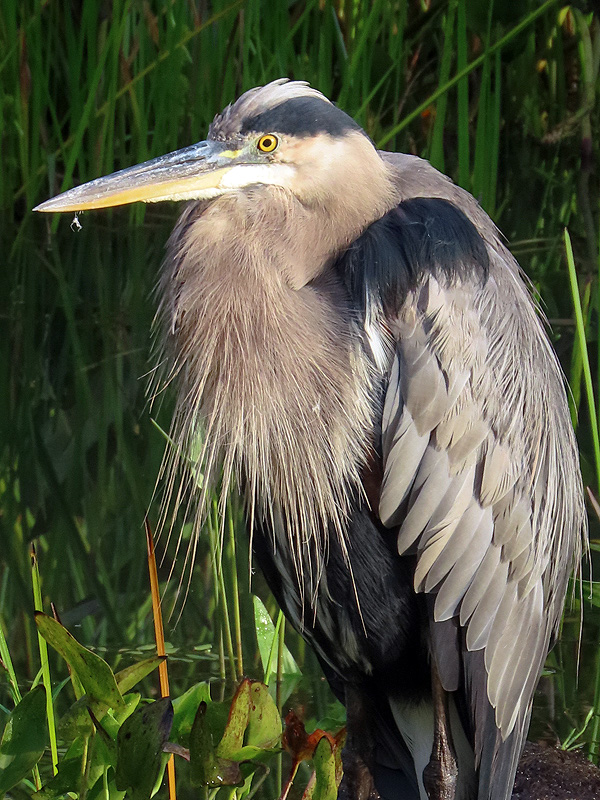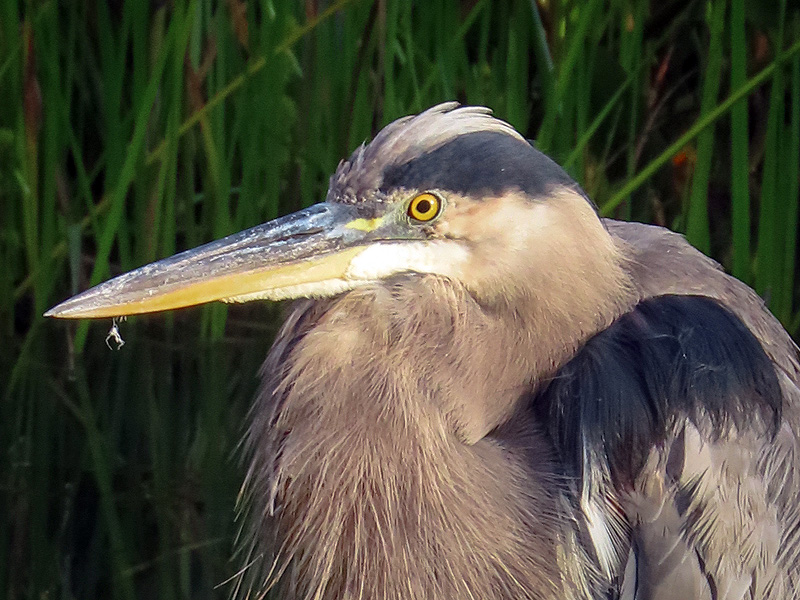Along the Air Line... 2020 - Summer, Part 10 The Air Line Trail in Eastern Connecticut - Stan Malcolm Photos |
HOME: Air Line... 2020 Pages Menu Stan's FlickR Albums |
August 16th. A Cooper's Hawk (Accipiter cooperii) far across the marsh. |
|
|
|
|
Great Blue Heron (Ardea herodias). Very close but masked by vegetation. Trail regulars will know the spot by the stump beside it. |
We're in a severe drought. Normally at least two feet more of this stump are submerged. |
Two young Eastern Bluebirds (Sialia sialis). |
Cardinal Flower (Lobelia cardinalis). |
Caught up with the Heron, now in the open. |
It soon flew to the other side of the trail and perched atop a dead tree. |
|
|
|
|
Back on the wide side of the marsh, a second Great Blue Heron... |
...the first Mallard (Anas platyrhynchos) I've seen in months. |
|
August 17th. White-tailed Deer (Odocoileus virginianus) in light ground fog far across the marsh. |
|
|
A brief afternoon stop at Cranberry Bog in East Hampton. Canada Goose (Branta canadensis) in a sea of Common Duckweed (Lemna minor). |
|
|
|
|
The pond is bordered by Spotted Joe-Pye-weed (Eupatorium maculatum)... |
|
...and invasive Purple Loosestrife (Lythrum virgatum). |
Honey Bee (Apis mellifera) working the Joe-Pye-weed. |
Bumble Bees (Family Bombidae) were working it too. |
Jewelweed or Spotted Touch-me-not (Impatiens capensis). |
Sweet Pea (Lathyrus odoratus). |
Eastern Carpenter Bee (Xylocopa virginica). Females can sting but don't unless handled. They bore in wood, creating a string of larval cells about 1/2 inch in diameter parallel to the grain. |
A male Blue Dasher dragonfly (Pachydiplax longipennis), a common local species, especially at ponds. |
August 18th. Foggy morning after welcome rain overnight. |
Great Blue Heron (Ardea herodias). |
Female Wood Duck (Aix sponsa), identified by the white teardrop eye ring, and three "teens". |
The young bird behind her is showing markings of a male at this stage. |
|
August 21st. On Maple, caterpillar of The Angel moth (Olceclostera angelica). |
The recorded host plants are Ash and Lilac. I didn't notice nearby feeding damage so perhaps it had wandered onto the Maple. |
The red scales behind the head can be displayed at will if the caterpillar is disturbed. |
(I had disturbed it.) |
Climbing Hempweed (Mikania scandens). |
Also called Climbing Boneset. |
Great Blue Heron (Ardea herodias) at the little pool down towards Old Colchester Road. |
|
|
Puffed for warmth? It was roughly 56 degrees this morning. |
|
